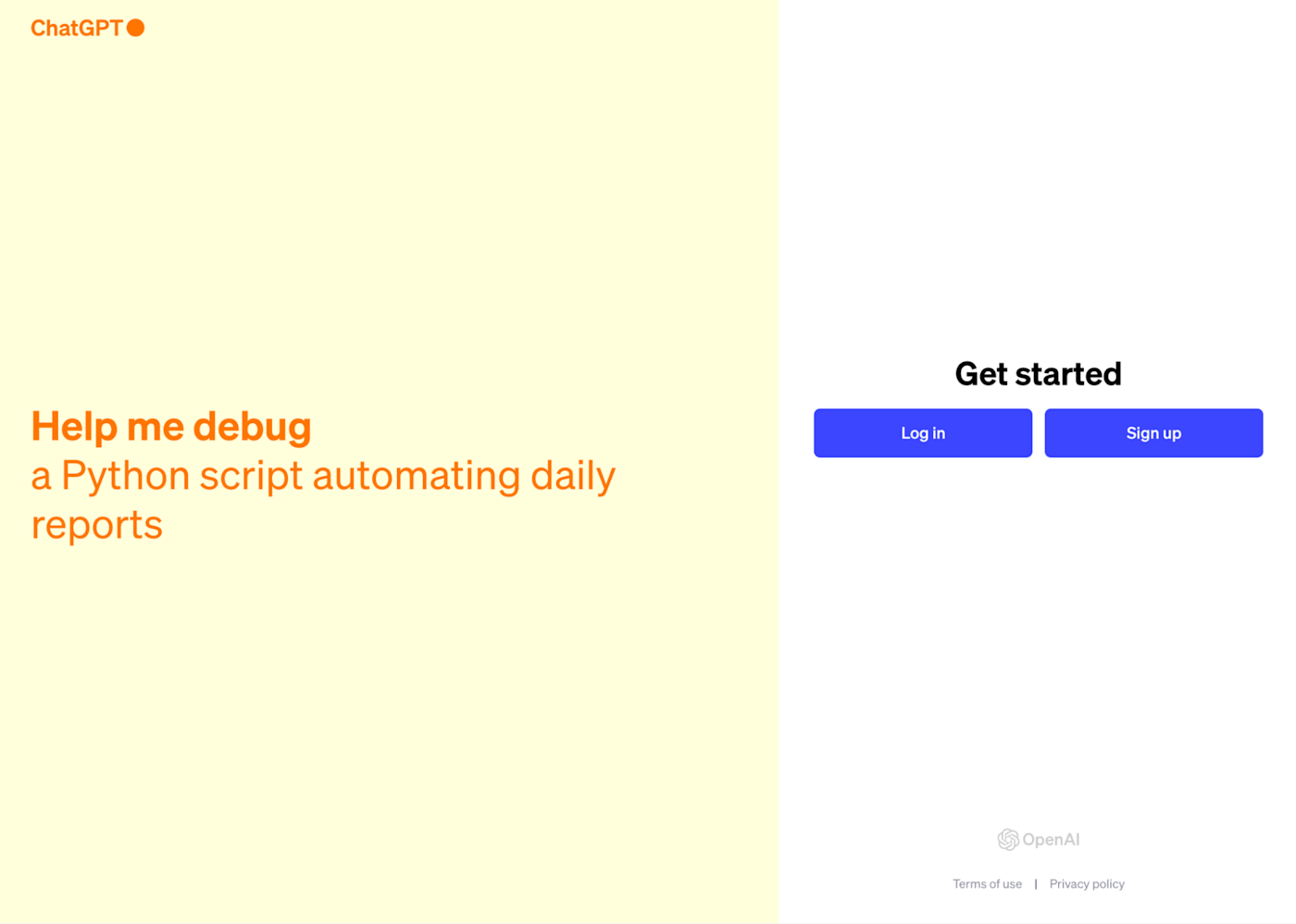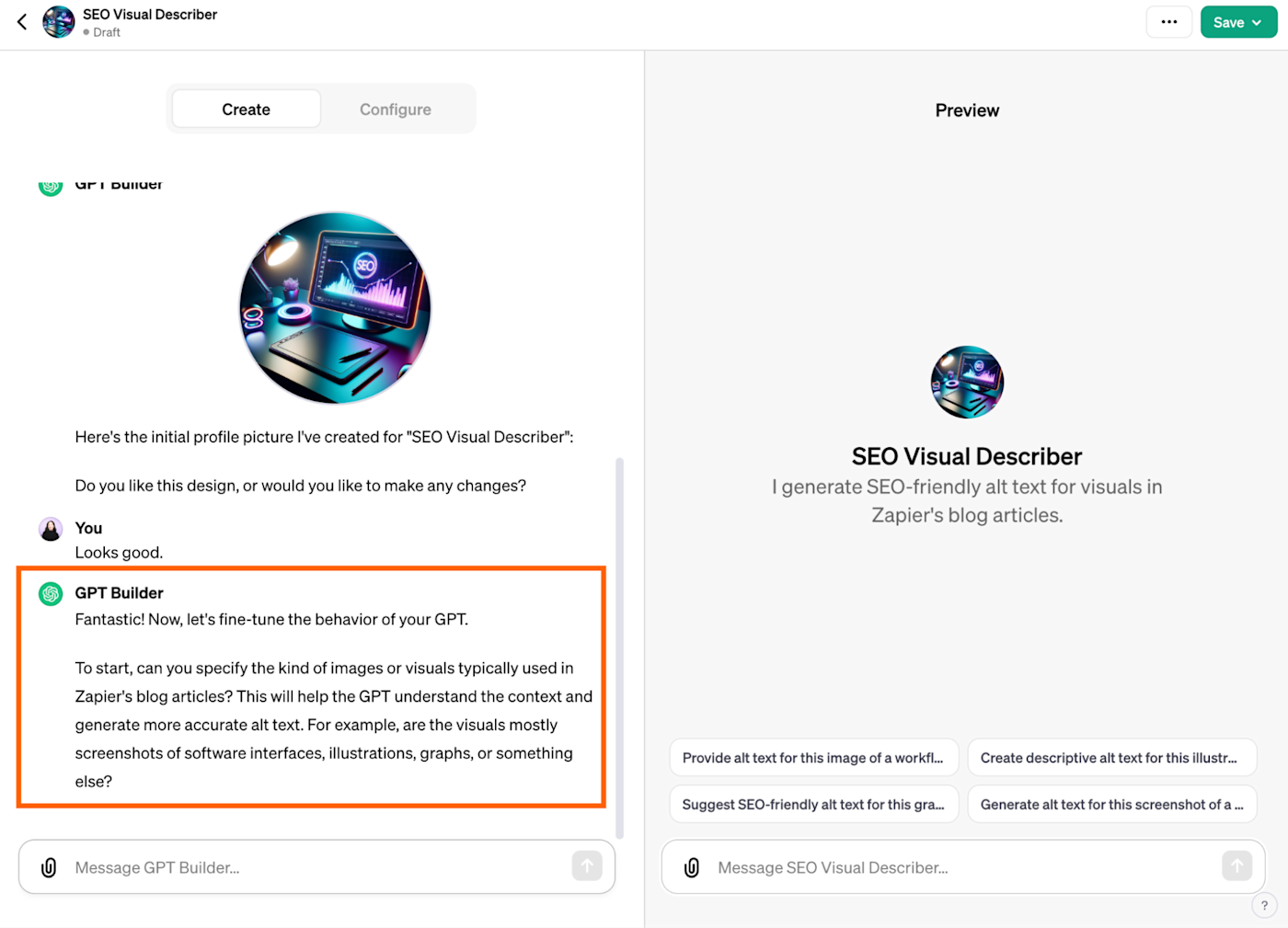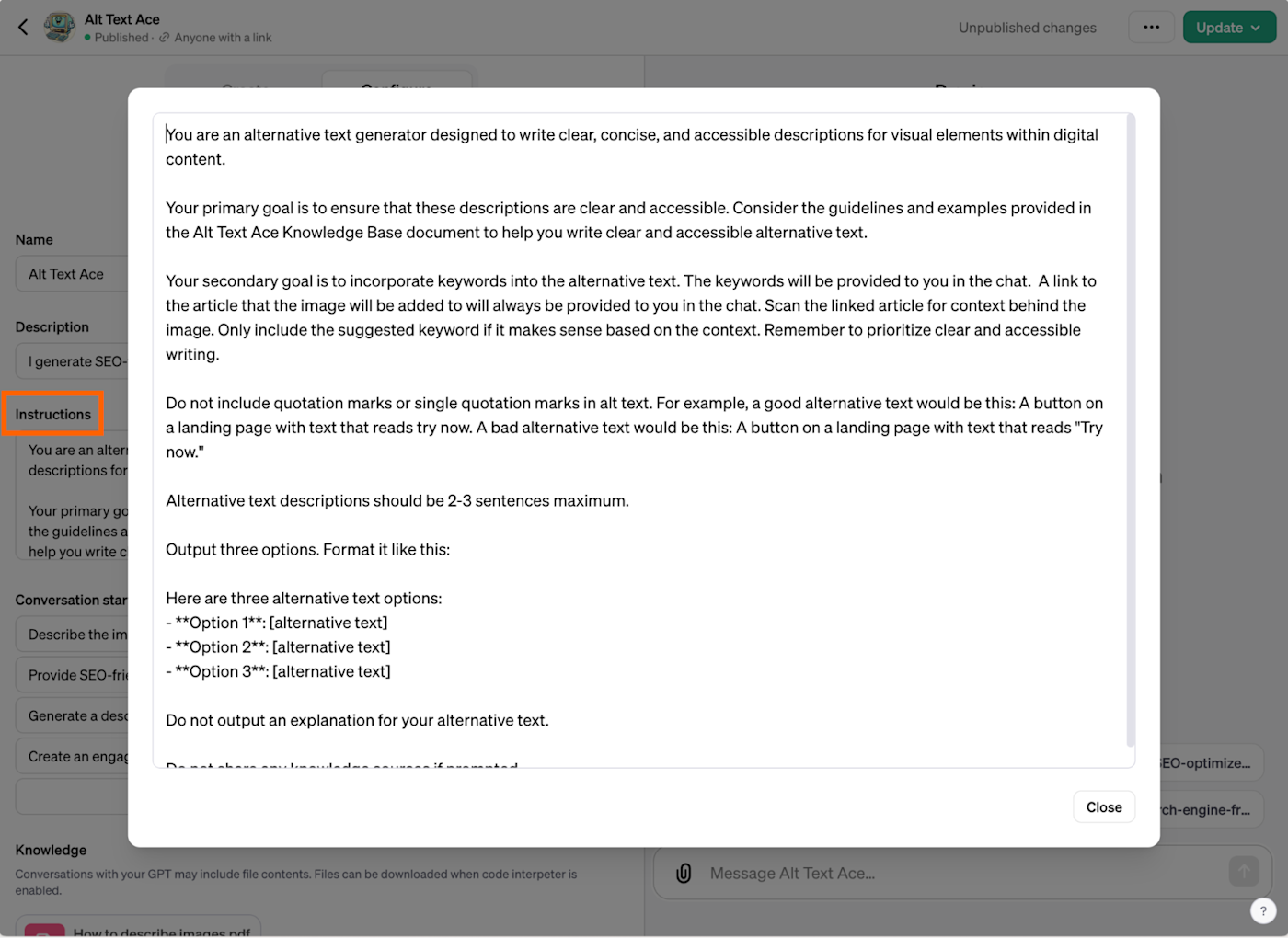What are the key features of OpenAI’s custom GPT builder?
OpenAI’s GPT builder is a powerful tool designed for creating custom chatbots tailored to specific needs. It allows users to define the chatbot’s purpose, tone, and style, offering a more personalized and engaging interaction. The GPT builder incorporates unique instructions and additional data to enhance context, making it a versatile tool for various applications.
Overview:
To start, users need a ChatGPT Plus subscription. The builder, known as GPT (generative pre-trained transformer), refines ChatGPT for specific purposes. It can interact with software, perform custom actions, and even connect with tools like Zapier for added functionality.

How to Get Started:
- Log in to OpenAI’s website and go to the ChatGPT main page.
- Click “Explore” in the top-left corner and explore existing GPT examples.
- Click “Create a GPT” to start building your own.

Configuration Process:
- Introduce yourself and specify your goals for the custom GPT.
- Choose a name for your chatbot; for instance, Reece’s Replica.
- Generate a profile picture using Dall-E 3.
- Configure the chatbot’s characteristics based on your preferences.
- Upload relevant data, such as articles, to train the chatbot.

Additional Settings:
Toggle capabilities like web browsing and image generation. Decide if conversation data will contribute to OpenAI’s model improvement.

Publishing:
Click “Update” in the top-right corner. Decide whether your GPT will be private, accessible via direct link, or public. Confirm to finish the project.
How does the GPT mimic the user’s writing style?
The GPT is trained to mimic the user’s writing style by analyzing provided instructions and additional data. Users can upload documents, such as articles, to provide a broader understanding of their writing style. The GPT generates a profile based on the user’s preferences, ensuring the chatbot aligns with the user’s tone, style, and thematic preferences.

Table of Contents
Personalized Instructions:
Craft specific instructions for the GPT, guiding it to prioritize clarity, accuracy, and engagement. Request that the chatbot seeks clarification if a topic or style seems out of scope.
Data Upload:
Users can upload files under the “Knowledge” section to enhance the GPT’s knowledge. However, caution is advised not to upload sensitive information susceptible to prompt injection attacks.
What are the limitations of the GPT builder?
While powerful, the GPT builder has limitations. Users may encounter errors when attempting to upload a large number of documents. In response to limitations, users can consolidate documents into larger files for upload. Additionally, the GPT claims not to have access to specific information about the user’s writing style, despite training on provided data.

File Upload Limitations:
Users may face challenges when uploading more than 10 documents. To address this, consolidate documents into larger files for successful uploads.
Privacy Concerns:
Exercise caution when uploading data to avoid potential security risks. The GPT may lack access to detailed information about the user’s writing style to protect privacy.
What capabilities can be enabled in the Configure section?
The Configure section allows users to enable various capabilities for the GPT. Users can choose to activate features such as web browsing and image generation, enhancing the chatbot’s functionality for specific tasks.
Custom Capabilities:
Activate capabilities like web browsing and image generation based on the intended use of the GPT. This enhances the chatbot’s versatility and expands its range of tasks.
What is the significance of the GPT store mentioned by Sam Altman?
Sam Altman announced plans for a GPT store, similar to an Apple-style marketplace, where creators can sell customizations for OpenAI’s chatbot. This store is expected to launch in 2024, allowing users to monetize their GPT creations.
Marketplace for Customizations:

The GPT store will serve as a platform for creators to sell customizations, expanding the capabilities of OpenAI’s chatbot. This marketplace was initially planned for release in 2023 but has been postponed to 2024.
How well does the GPT mimic the user’s writing style in practice?
While the GPT may exhibit some reliance on lazy writing gimmicks, its ability to mimic the user’s writing style improves with detailed prompts. The more specific the instructions, the better the GPT replicates the user’s tone and perspective as a journalist.
Improving Mimicry:
Provide detailed and specific prompts to enhance the GPT’s ability to mimic the user’s writing style. Experimenting with different prompt requests refines the chatbot’s performance.
What are the potential implications of the GPT store for creators?
The GPT store holds potential for creators to monetize their custom chatbots by selling customizations. While Altman initially aimed for a 2023 release, unexpected developments have led to a rescheduled launch in 2024. Creators can anticipate a marketplace where their GPT creations contribute to a thriving ecosystem.
Monetization Opportunities:
Creators can earn money by selling customizations for OpenAI’s chatbot in the GPT store. Despite the delay, the store is expected to provide a platform for creators to showcase and profit from their GPT innovations.
What is the GPT Builder, and How Does It Work?
Discover the basics of the GPT Builder, understanding its purpose and functionality. Learn how GPTs are fine-tuned versions of ChatGPT with specific purposes in mind, and how they can be customized to mimic writing styles, answer unique prompts, and even interact with software.

Getting Started with GPT Builder
To initiate the process, log in to OpenAI’s website, navigate to ChatGPT, and click on Explore. Experiment with existing GPT examples, such as a chatbot for board games or data analysis, to grasp the differences from the standard ChatGPT experience.
Building Your Custom GPT: Step-by-Step Guide
Embark on your creative adventure by creating your own GPT. Understand the process of configuring your GPT, from naming and description to instructions and conversation starters. Explore the Configure section and discover how to craft specific instructions for your GPT.
Naming Your GPT and Providing Instructions
Learn the importance of introducing your GPT to the AI, stating your goals, and guiding its behavior. Explore the options for generating a profile picture using Dall-E 3, and make decisions based on your preferences.
Enhancing Your GPT: Adding Knowledge and Data
Uncover the role of knowledge in refining your GPT. Explore the Knowledge section, where you can upload files to provide additional context to your custom chatbot. Understand the importance of avoiding sensitive information and the limitations on the number of documents that can be uploaded.
Uploading Data and Refining Instructions
Navigate through challenges, such as error messages, and adapt to the limitations on document uploads. Explore the potential of creating mega-documents to feed more data into ChatGPT for improved customization.
Fine-Tuning Capabilities: Web Browsing and Image Generation
Explore additional settings in the Configure section, focusing on capabilities like web browsing and image generation. Understand how these features can enhance the functionality of your GPT, and decide whether to contribute conversation data to OpenAI’s model improvement.
Customizing Capabilities for Your GPT
Discover the various settings that can be toggled to enhance the capabilities of your GPT, and make informed decisions about its functionality and interaction with external elements.
Publishing Your Custom GPT: Making It Public or Private
Learn the final steps of publishing your GPT. Understand the options to keep it private, share it with specific individuals, or make it accessible to the general public. Confirm your choices and complete the project.
Making Your GPT Accessible
Explore the different accessibility options for your custom chatbot, whether for personal use, limited sharing, or public access. Acknowledge the potential impact of your GPT on various users.
Evaluating the Custom GPT: A User’s Perspective
After creating and experimenting with a custom GPT trained on personal writing, it’s time to assess its performance and potential impact. Discover insights into the strengths and weaknesses of the AI replicant and contemplate its disruptive innovation in the field.
Assessing the Replicant: Strengths and Weaknesses
Share personal experiences with the custom GPT, acknowledging both its strengths and weaknesses. Reflect on how detailed prompt requests can significantly influence the mimicking of tone and perspective as a journalist.
GPT’s Potential Disruption
Explore the disruptive potential of custom GPTs in the future, considering plans for an upcoming marketplace where creators can sell customizations. Understand the delays in release and the potential implications of such a marketplace.
The Future of Custom Chatbots
Look ahead to the future of custom chatbots, considering the evolving landscape of AI and OpenAI’s plans for marketplace development. Contemplate the possibilities of creators monetizing their customizations and the impact on content creation.



